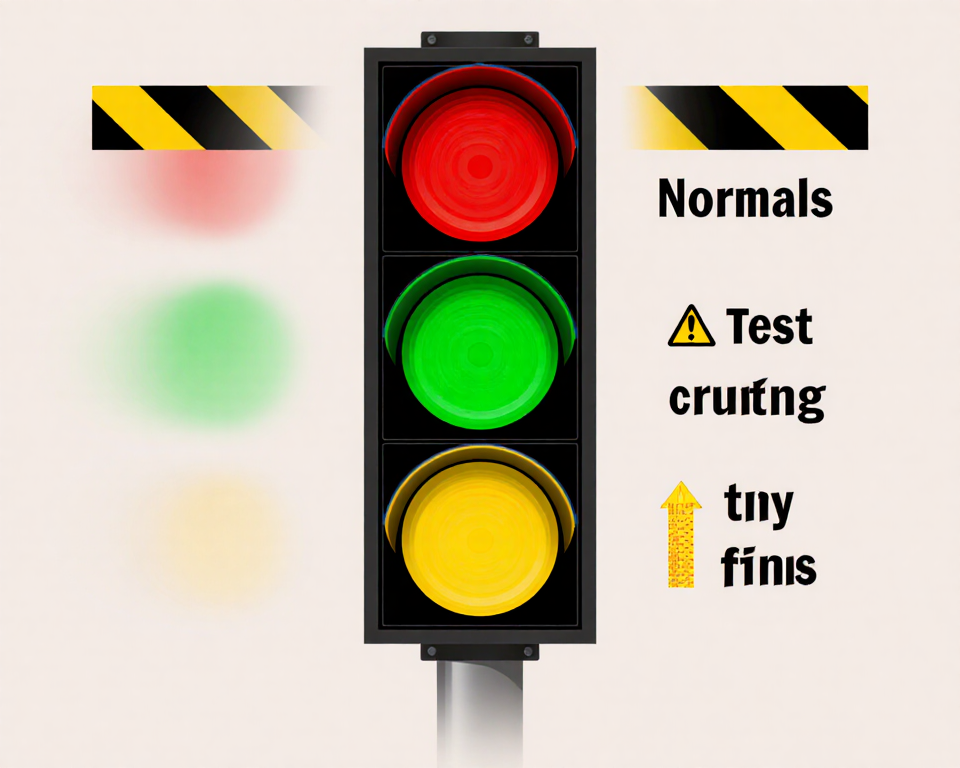Blood Test Normal Range Interpretation Guide: What Your Numbers Really Mean

When you walk into a lab and the technician hands you a sheet of numbers, it can feel like reading a secret code. Are those values in the green zone? Do they hint at hidden health issues? This blood test normal range interpretation guide will translate those numbers into plain English, help you spot red flags, and give you the confidence to discuss results with your doctor.
—
What Is a Normal Range?
Blood tests are like a snapshot of your body’s inner workings. A normal range is the span of values that most healthy people fall into for a specific test. Think of it as a traffic light: green means you’re cruising along fine, yellow suggests you might want to keep an eye on things, and red indicates a potential problem that needs attention.
How Normal Ranges Are Determined
- Population studies: Labs analyze thousands of healthy volunteers to establish typical values.
- Statistical spread: Most ranges cover 95% of the population, leaving 2.5% on each end.
- Age, sex, and ethnicity adjustments: Some labs adjust ranges based on these factors because biology isn’t one-size-fits-all.
Why the Numbers Matter
- Early detection: Small deviations can flag chronic conditions before symptoms appear.
- Treatment monitoring: Doctors use ranges to gauge how well a medication is working.
- Personal health insight: Knowing where you stand helps you make lifestyle changes.
—
Why Normal Ranges Matter in Everyday Life
You might wonder, “If my numbers are within the normal range, am I really healthy?” The answer is a nuanced yes. Normal ranges are a baseline, but they don’t guarantee perfection. They’re a snapshot, not a lifetime guarantee.
The “Goldilocks” Principle
Just like Goldilocks and the Three Bears, the ideal health zone is “just right.” Too high or too low can both be problematic, even if the value falls within the accepted range.
Rethinking “Normal”
- Individual variation: Genetics, diet, and lifestyle can shift what’s normal for you.
- Dynamic nature: Your normal range can change over time, especially with aging or new health conditions.
—
Common Blood Tests and Their Typical Ranges
Below is a quick reference for some of the most routine tests. Remember, these ranges can vary slightly between labs, so always check the reference values on your report.
| Test | Typical Range | What It Tells You |
|——|—————|——————-|
| Hemoglobin (Hb) | 13.5–17.5 g/dL (men)
12.0–15.5 g/dL (women) | Oxygen transport capacity |
| White Blood Cell Count (WBC) | 4,000–11,000 cells/µL | Immune system activity |
| Platelets | 150,000–450,000 cells/µL | Blood clotting potential |
| Glucose (fasting) | 70–99 mg/dL | Blood sugar regulation |
| Cholesterol (LDL) | < 100 mg/dL | Heart disease risk |
| Creatinine | 0.6–1.2 mg/dL | Kidney function |
| ALT/AST | 7–56 U/L | Liver health |
*These are illustrative ranges; your lab’s values may differ.*
—
Interpreting Your Results: A Step‑by‑Step Guide
Now that you know the numbers, how do you make sense of them? Follow this simple process to decode your report.
1. Locate the Reference Range
Each value on your report will have a “Ref. Range” column. If your result sits between the lower and upper limits, it’s technically normal.
2. Check for Trends
- Single vs. repeated tests: One abnormal result may be a fluke.
- Trend lines: If you see a gradual rise or fall over months, that’s worth flagging.
3. Consider Clinical Context
A 110 mg/dL fasting glucose is normal, but if you’re a 30‑year‑old with a family history of diabetes, your doctor might still advise lifestyle changes.
4. Ask the Right Questions
- Why did my value shift?
- Is this change clinically significant?
- Do I need a follow‑up test?
5. Use the “Rule of Three”
If three consecutive values drift toward the upper or lower bound, it’s time to talk to your healthcare provider.
—
When to Seek Medical Advice

Even if most numbers are within range, certain scenarios warrant a deeper look.
- Symptoms present: Fatigue, unexplained weight loss, or pain despite normal results.
- Persistent borderline values: Repeatedly hovering near the edge of normal.
- Family history of disease: Genetic predispositions may shift your risk profile.
- Medication interactions: Some drugs can alter lab values (e.g., statins affecting liver enzymes).
*“Your blood test is a conversation starter, not a verdict.”* – Dr. Emily Harper, Family Physician
—
Tips for Accurate Testing
Getting reliable numbers starts before the needle pierces your skin.
- Fast when required: Fasting glucose and lipid panels need a 9–12 hour fast.
- Hydrate: Dehydration can skew certain values, like creatinine.
- Avoid strenuous exercise 24 hours before: Exercise can temporarily elevate muscle enzymes.
- Tell your doctor about supplements: Vitamin D, iron, or herbal remedies can influence results.
- Ask for the same lab: Consistency eliminates inter‑lab variability.
—
Common Pitfalls and How to Avoid Them
Even seasoned patients stumble over these mistakes.
- Misreading units: mg/dL vs. mmol/L can trip you up.
- Ignoring reference ranges: A result of 5.0 mmol/L for glucose is high, but 5.0 mg/dL is low.
- Assuming “normal” equals “perfect”: Normal ranges are averages, not perfection.
- Skipping follow‑up: A single borderline result might need a repeat test.
—
Your Health Toolkit: Making the Most of Your Numbers
Blood test results are powerful, but only when you wield them wisely.
- Keep a log: Track results over time to spot trends.
- Share with your provider: Bring your report to appointments; it’s a conversation starter.
- Set realistic goals: Use your numbers to set targets for diet, exercise, or medication adjustments.
- Stay curious: Ask questions; knowledge is your best defense.
Remember, the goal isn’t to become a medical expert overnight. It’s to arm yourself with a clear understanding of what your blood test normal range interpretation guide reveals about your health.
—
The Final Checkpoint: Your Numbers, Your Narrative
Think of your blood test as a chapter in the story of your health. Each value is a plot point—some dramatic, some subtle. By interpreting the normal ranges, you’re not just reading numbers; you’re reading a narrative that can guide your next health decisions.
Take a moment to review your results, ask your healthcare provider the right questions, and set actionable goals. Your body’s chemistry is complex, but with this guide, you’re now equipped to read the script and co‑author a healthier future.